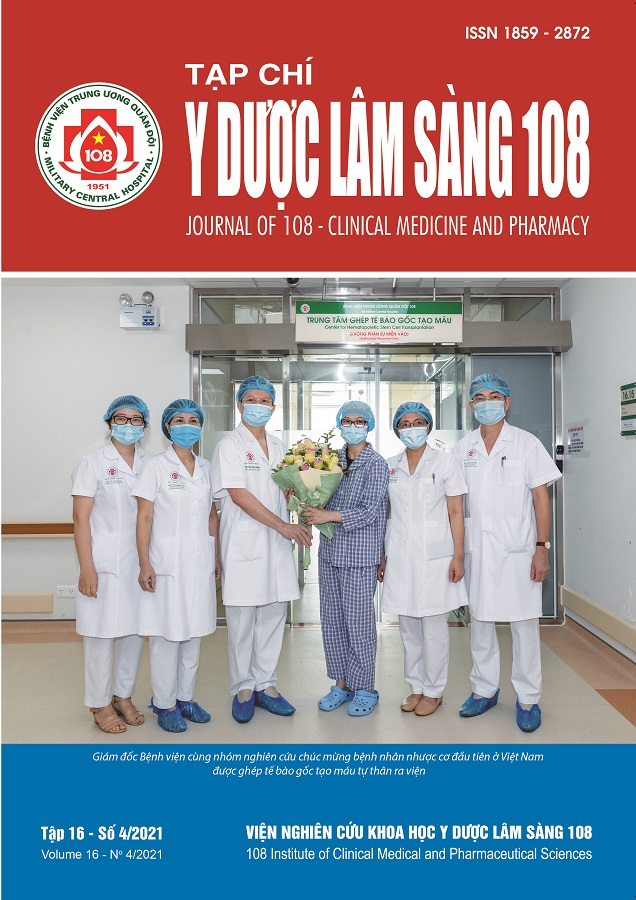Studying some characteristics and treatment outcome of disorders of serum sodium and postassium concentration in patients with chronic wounds
Main Article Content
Keywords
Abstract
Objective: To evaluate the treatment outcome of disorders of serum sodium and postassium concentration in patients with chronic wounds. Subject and method: A prospective descriptive study was performed on thirty patients who aged over 16 years old with chronic wounds and disorders of serum sodium (Na+) and postassium (K+) concentration within 24 hours after hospitalization at Wound Healing Center of National Burn Hospital, from July 2019 to May 2020. These patients were received treatment for electrolyte disorders (Na+ and K+). We determined the concentration of Na+ and K+ in serum of these patient at T0 (on admission), T1 (When the concentration of Na+ and K+ returned to normal levels), T2 (24 hours after T1). We also determined the concentration of Na+ and K+ in wound exudate, which was obtained from Vacuum Assisted Closure (VAC). Result: The patients with chronic wounds and electrolyte disorders who usually had low concentration of Na+ (50%), low K+ was 26.67%, Na+ and K+ were both low of 13.33%. At T0, the average serum Na+ and K+ concentrations were 126.54 ± 7.92mmol/l and 2.23 ± 0.95mmol/l; the average exudate Na+ and K+ concentrations were 124.33 ± 5.71mmol/l and 2.18 ± 0.85mmol/l. The duration of treatment to return Na+ and K+ concentrations to normal were 1.54 ± 0.63 days and 1.77 ± 0.48 days. At T2, only 50% of patients had concentration of serum Na+ and K+ which were normal. We still found that 26.67% and 16.67% of patients with low serum Na+ and K+ concentrations. Conclusion: Electrolyte disturbances in patients with chronic wounds were usually low serum Na+ and/or K+ concentration. Na+ and K+ concentration in exudate were nearly equal to those in serum. Electrolyte disturbances in patients with chronic wounds were easy to re-establish after treatment
Article Details
References
2. Ahmed M. El-Sharkawy, Opinder Sahota, Ron J. Maughan et al (2014) The pathophysiology of fluid and electrolyte balance in the older adult surgical patient. Clinical Nutrition 33: 6-13.
3. Vũ Văn Đính (2012) Hồi sức cấp cứu toàn tập. NXB Y học.
4. Jay Wook Lee (2010) Fluid and elcectrolyte disturbances in critically III patients. Electrolyte Blood Press 8: 72-81.
5. Allison P, Lobo DN (2004) Fluid and electrolytes in the elderly. Curr Opin Clin Nutr Metab Care 7: 27-33.
6. Cutting KF (2004) Exudate: Composition and functions. In: White R, editor. Trends in Wound Care: Volume III. London: Quay Books.
 ISSN: 1859 - 2872
ISSN: 1859 - 2872
